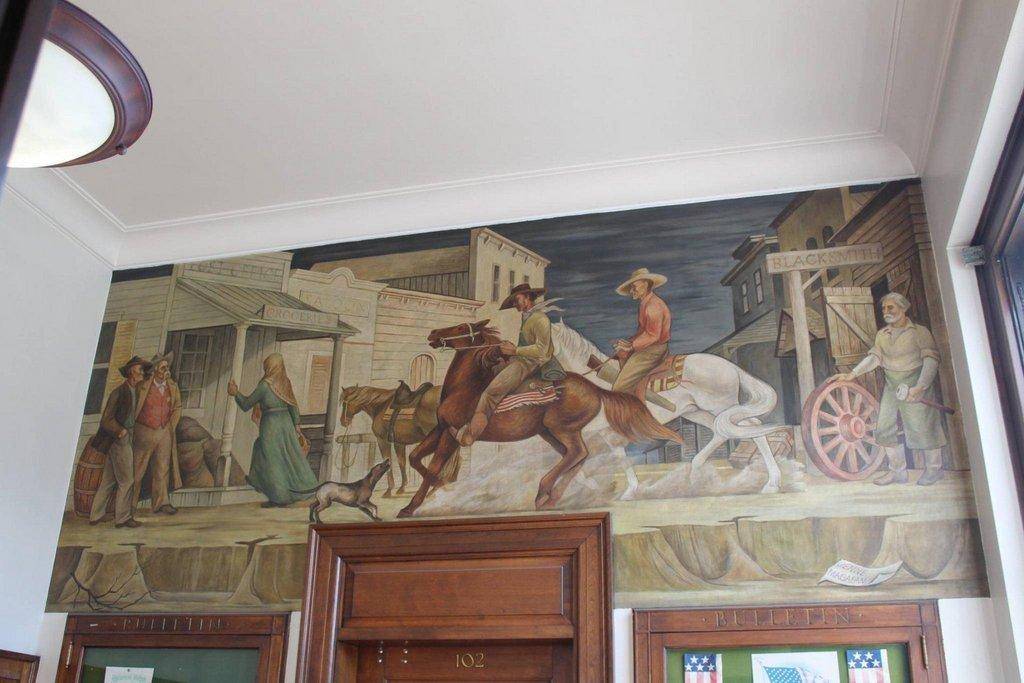By Walt Borla
Local citizens entering the Helper Post Office are sure to notice the mural in the lobby of the office over the door to the postmaster’s office. The question is often asked to employees of the office: “How did that mural come to be placed in this office and what is the story behind it?”
An interesting question indeed and the answer goes back to the depression years of the 1930s. During that period of time, with 25% if the nation’s work force unemployed, President Franklin D. Roosevelt instituted a make work program known at the Works Progress Administration, commonly known as the WPA. Unemployed people were put to work in various areas, construction, parks, education, roads and other fields.
In the wide spread areas in which employment was being offered to the unemployed through the WPA, Pres. Roosevelt had a friend who suggested to him a program for fostering the work of unemployed artists in the country. His suggested was to have artists submit samples of their work to the Fine Arts Section of the Federal Works Agency where a selection would be made for commissioning the paintings of mural to be placed in the nation’s post office or other federal buildings.
It is reported that there were some misgivings for such a proposal by some of Pres. Roosevelt’s associates in his cabinet. The president seized upon the suggestion, however, after one his closet advisors, Harry Hopkins, remarked, “Artists have to eat also.”
As a result, artists nationwide were invited to submit samples of their work to the Fine Arts Section where a selection would be made commissioning the various artists to paint mural to be placed in post offices and federal buildings in the country.
The mural now in the Helper post office was painted by Jenne Magafan of Colorado Springs, Colo. The mural, a painting of a typical western town of years ago, was placed in the lobby of the Helper post office in 1939. It is not to be construed to a picture of early day Helper, however. Ms. Magafan had two of her entries selected for painting, the other being in the post office at Glenwood Springs, Colo. The building in Glenwood Springs no longer serves as the community post office, but is now reported that Ms. Magafan was paid $450 for her murals, a goodly sum of money during the Great Depression.
According to Walt Borla, retired postmaster of Helper, only two other post offices in Utah received murals as a result of the program, Beaver and Provo. As in Glenwood Springs, the office in Provo now is the Federal Building. Asked why Helper, Provo and Beaver may have been selected for murals? Borla believes the post offices in those cities were selected because the buildings were comparatively new at that time. The Helper Post Office was constructed in 1938.
During 1987, a picture of the Helper mural was selected for display along with others in the Smithsonian National Gallery of Art during a program focusing on the various murals in federal buildings through the country. Borla and his wife had the opportunity at the time to view the impressive display in Washington DC.

